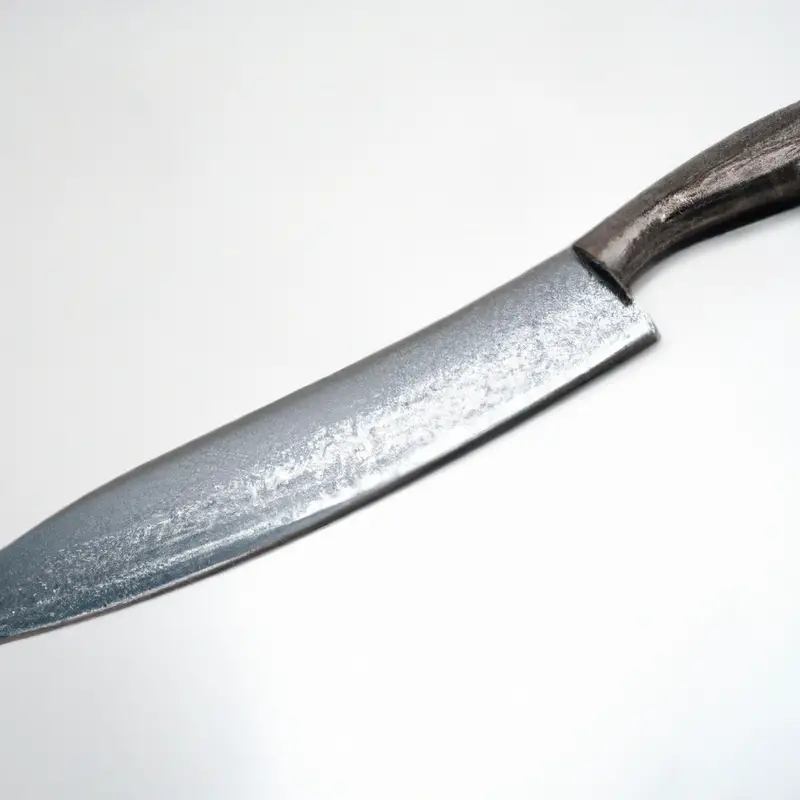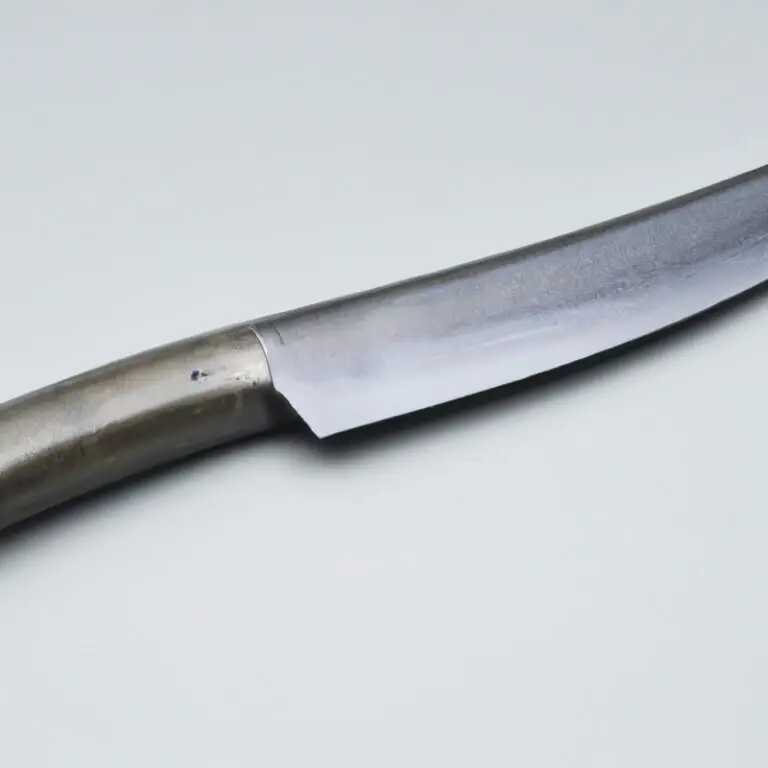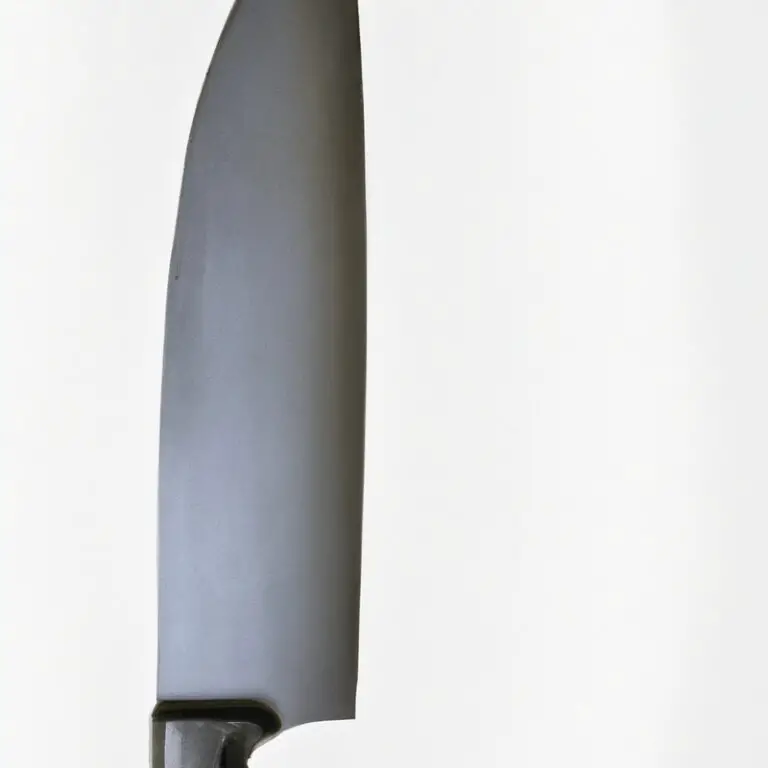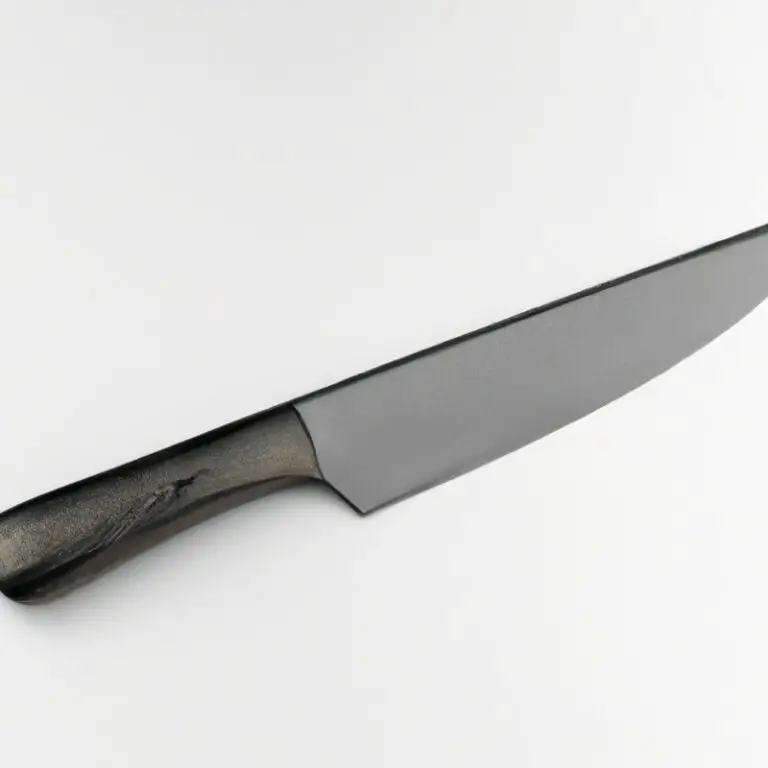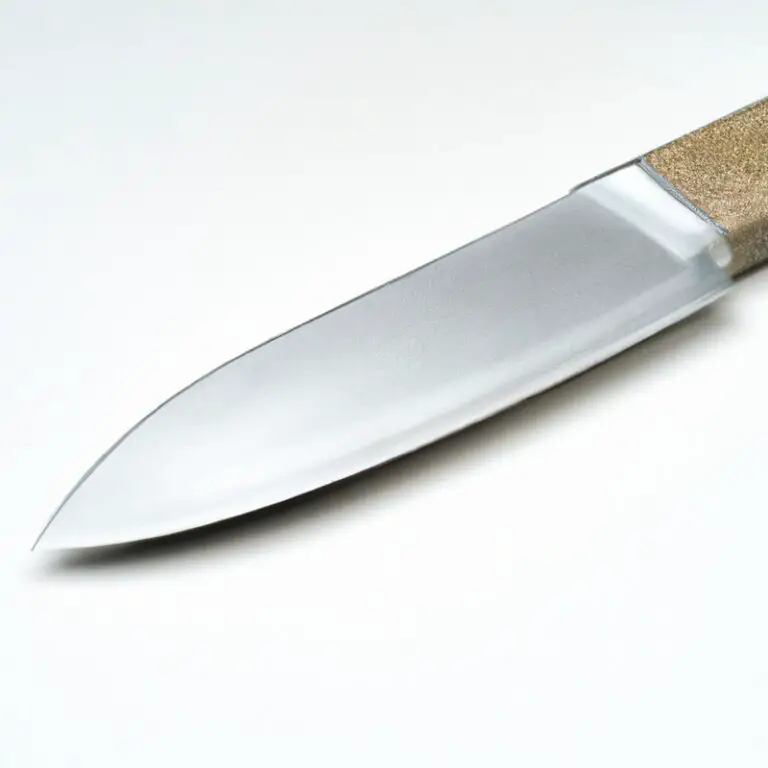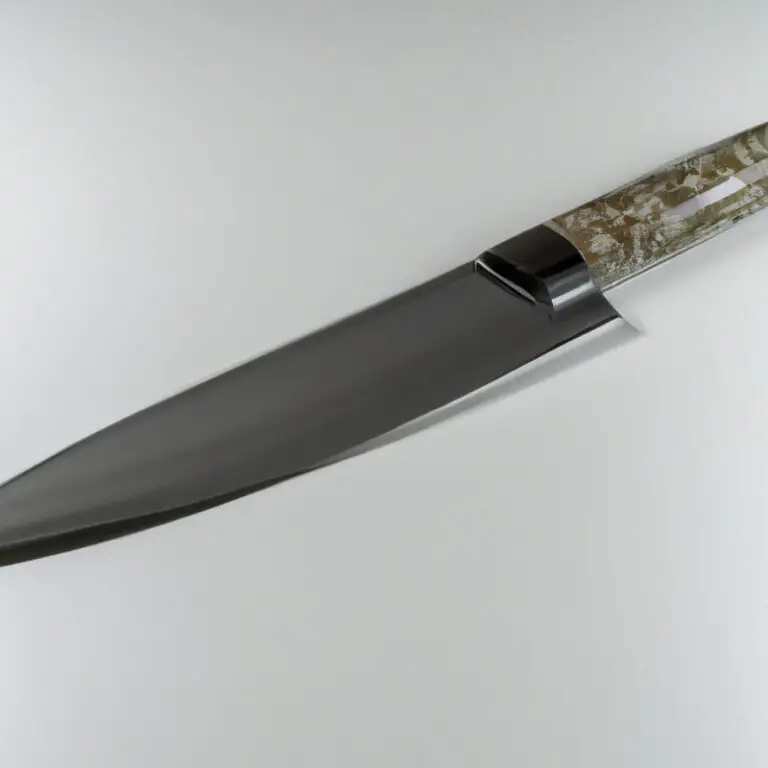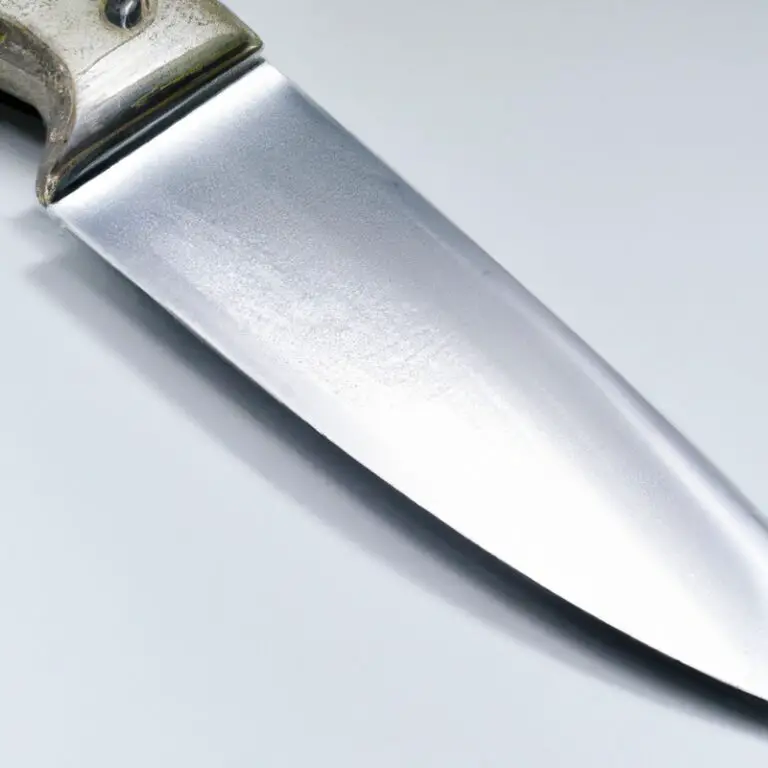How To Achieve Precise Cutting Angles With a Gyuto Knife? Mastering The Technique
Key Takeaways:
- Achieving precise cutting angles with a Gyuto knife requires proper grip and technique.
- Maintaining a consistent angle and sharpening regularly are essential for achieving precision cuts.
- Investing in a high-quality Gyuto knife and using the proper cutting board can also improve your results.
- Practice and patience are necessary to master the art of precise cutting with a Gyuto knife.
Have you ever struggled to achieve precise cutting angles while using a Gyuto knife? Don’t worry; you’re not alone! The art of slicing and dicing with precision takes time and practice.
However, with a few essential techniques, you too can achieve perfect cutting angles with a Gyuto knife.
In this article, I will provide a comprehensive guide on how to understand the anatomy of the knife, hold it correctly, maintain a consistent angle, master the slicing technique, sharpen the blade, and use a honing rod to achieve the perfect cutting angles. So let’s dive in and take the first step towards becoming a culinary pro!
| Step | Description |
|---|---|
| 1 | Hold the blade at a 10-15 degree angle to the sharpening stone. |
| 2 | Start with the heel of the blade and push it forward, following the curve of the blade. |
| 3 | Apply light pressure and maintain a consistent angle. |
| 4 | Repeat on the other side of the blade, maintaining the same angle. |
| 5 | Finish by sharpening the tip of the blade separately. |
Understanding the anatomy of a Gyuto knife for precise cutting angles
A Gyuto knife is a versatile Japanese chef’s knife that can accomplish a variety of cutting tasks with precision and ease. Understanding its anatomy is essential to achieve precise cutting angles.
The anatomy of a Gyuto knife consists of a pointed tip, a curved blade, a sharp edge, a bolster, and a handle.
The pointed tip allows for intricate cuts, the curved blade aids in rocking motions, the sharp edge allows for clean slices, the bolster helps with balance, and the handle ensures a comfortable grip. It is essential to be familiar with these parts to leverage the knife’s potential and achieve the desired cutting angles.
How to hold a Gyuto knife for maximum control and precision during cutting
To achieve maximum control and precision during cutting with a Gyuto knife, it’s crucial to hold the knife correctly. To start, grip the handle of the knife firmly with your dominant hand, and place your index and middle fingers on the blade’s base where the handle meets the blade, called the choil.
Then, wrap your thumb around the back of the handle for additional support.
Maintain a relaxed grip on the knife, and keep your wrist straight while cutting. Avoid gripping the knife too tightly, as this can cause fatigue and strain on your hand.
Position the blade at a 15-20 degree angle to the cutting surface, and use a rocking motion to slice through the food.
For more precise cuts, use a pinch grip by placing your index finger and thumb on opposite sides of the blade just above the cutting edge. As you cut, keep the blade in contact with the cutting board to maintain stability and control.
Keep your fingers curled under and away from the blade to avoid injury.
Overall, proper grip and technique will help you achieve the most precise cutting angles with a Gyuto knife.
The importance of maintaining a consistent angle while using a Gyuto knife
Maintaining a consistent angle while using a Gyuto knife is essential for achieving precise and uniform cuts. Inconsistent angles can result in uneven slices and a loss of control, which can be dangerous.
A consistent angle also helps to prolong the life of your knife by reducing the likelihood of chipping or dulling the blade.
It is recommended to maintain an angle of around 15-20 degrees when using a Gyuto knife, and to keep this angle consistent throughout the cutting process. Practicing and mastering this technique will greatly improve your ability to achieve precise cutting angles and create professional-looking dishes.
Mastering the slicing technique with a Gyuto knife for perfect cutting angles
Mastering the slicing technique with a Gyuto knife involves a few key steps. First, ensure that the knife’s edge is sharp, as a dull blade can make it difficult to maintain a consistent angle.
Hold the knife firmly with your dominant hand and use your non-dominant hand to hold the food in place.
Keep your wrist straight and use a smooth sawing motion to slice through the food. To achieve the perfect cutting angle, slice through the food at a 45-degree angle, starting from the heel of the knife and moving towards the tip.
A tip-to-heel cut is perfect for longer foods like carrots or cucumbers.
For shorter foods like onions or shallots, use a heel-to-tip cut, slicing through the food at a 45-degree angle in the opposite direction. Maintaining a consistent angle while slicing is essential for creating even cuts.
If you’re struggling to maintain consistency, practice on a softer food like bread or cheese until you feel comfortable.
Remember to take care of your Gyuto knife by sharpening it regularly and using a honing rod to maintain the blade’s alignment. By mastering the slicing technique with a Gyuto knife, you’ll be able to achieve precise cutting angles every time.
Techniques for achieving different cutting angles with a Gyuto knife, including a tip-to-heel cut and heel-to-tip cut
To achieve different cutting angles with a Gyuto knife, you can use two primary techniques: tip-to-heel or heel-to-tip. With the tip-to-heel technique, start the cut using the tip of the blade and proceed to the heel in a downward motion.
This method is useful for precision work and ensures a fine, even cut.
On the other hand, the heel-to-tip technique involves starting the cut with the heel of the blade and proceeding to the tip. It’s ideal for larger cuts or chopping tasks, and it’s recommended that you avoid sawing motions for clean cuts.
The key to achieving precise cutting angles with these techniques is to maintain a consistent angle throughout the cut.
To do this, hold the blade at a 15-20 degree angle and maintain that angle as you cut through the food. Experiment with both techniques to find which works best for your cutting task.
With practice and patience, you’ll be able to achieve precise cutting angles with your Gyuto knife.
How to sharpen a Gyuto knife for optimal cutting angles
To sharpen a Gyuto knife, you will need a sharpening stone and lubricant. Start by soaking the stone in water for at least 15 minutes.
Add lubricant to the stone and hold the knife at a 15-20 degree angle, with the blade against the stone.
Move the blade back and forth, maintaining a consistent angle, until a burr forms on the opposite side of the blade. Flip the knife over and repeat the process on the other side.
When the burr is gone, use a honing rod to realign the metal particles for optimal cutting angles.
Remember to sharpen your Gyuto knife regularly for the best results.
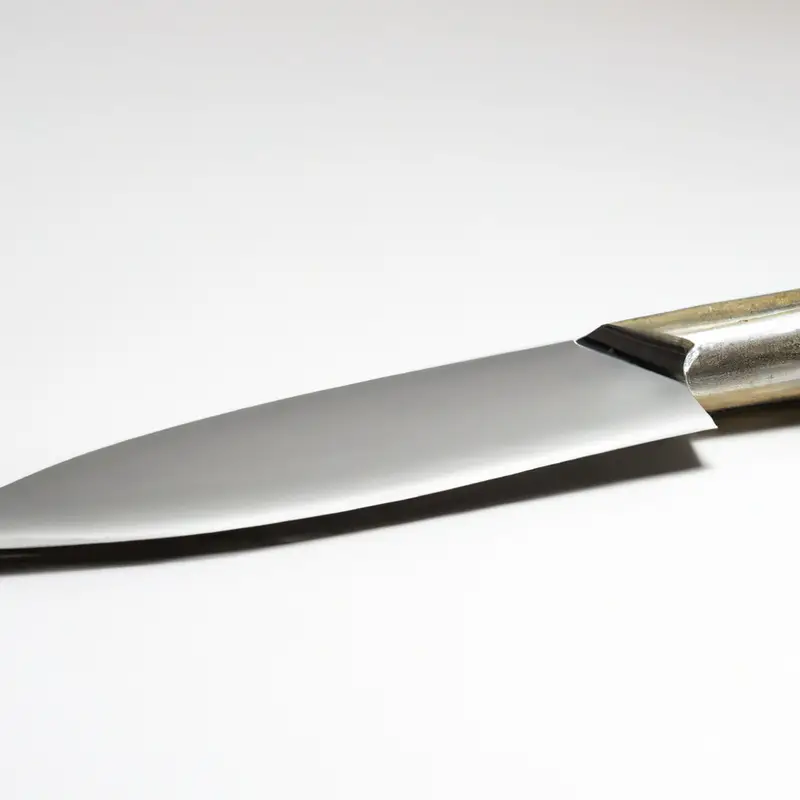
Using a honing rod to maintain precise cutting angles with a Gyuto knife
Using a honing rod is a crucial step in maintaining precise cutting angles with a Gyuto knife. It helps to keep the knife’s edge straight, ensuring that it stays sharp for longer periods.
To use a honing rod, hold the rod in your non-dominant hand and the Gyuto knife in your dominant hand at a 22.5-degree angle.
Then, starting from the heel of the blade, swipe the knife’s edge across the rod in a gentle motion, moving towards the tip. Repeat this process on the other side of the blade, and alternate until you reach the desired level of sharpness.
Remember to use gentle pressure to avoid damaging the honing rod or the blade of the knife.
Cutting different types of food with a Gyuto knife and achieving precise angles
Cutting different types of food with a Gyuto knife requires an understanding of the food’s texture and the type of cutting angle that works best for it. For example, an angled cut works well for slicing through boneless meat, while a rocking motion is suitable for mincing herbs or cutting vegetables.
The tip-to-heel cutting technique is effective for dividing large cuts of meat or fish, while the heel-to-tip method is best for precision cutting.
It is crucial to maintain a consistent angle while cutting, and a Gyuto knife’s narrow and thin blade allows for precise control. When working with hard fruits or vegetables, use slight pressure and let the blade’s weight do most of the work.
Additionally, it is essential to have a sturdy cutting board, as a soft or unstable surface may cause the knife to slip and lead to injuries.
With the right technique and understanding of different cutting angles, a Gyuto knife can make precise cutting a breeze for every type of food.
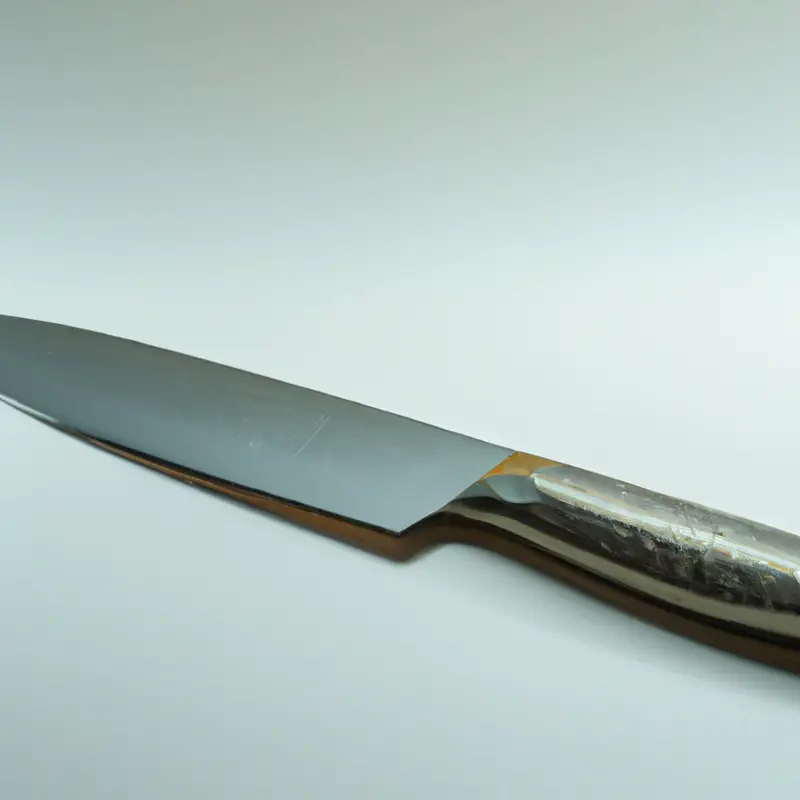
The role of the cutting board in achieving precise cutting angles with a Gyuto knife
The cutting board plays a crucial role in achieving precise cutting angles with a Gyuto knife. A good cutting board should be durable, stable, and large enough to accommodate your Gyuto knife.
A stable cutting board prevents slippage, providing optimal control during cutting.
Using a wooden or bamboo cutting board can also minimize damage to the blade’s edge, helping to maintain its sharpness over time. Additionally, having a clean cutting surface ensures that food doesn’t stick to the blade, leading to uneven and imprecise cuts.
Therefore, choosing the right cutting board and maintaining it properly can make a big difference in achieving precise cutting angles with a Gyuto knife.
How to clean and store your Gyuto knife for longevity and continued precision cutting
Cleaning and storing your Gyuto knife properly is crucial to its longevity and continued precision cutting. Here are some tips on how to do it: Cleaning:
- Rinse your knife with warm water immediately after use.
- Use a soft sponge or cloth and mild detergent to clean the blade, avoiding harsh abrasives.
- Dry the knife with a clean towel and avoid leaving it wet or soaking in water.
- Avoid washing your knife in a dishwasher, as the heat and detergent can damage the blade.
Storing:
- Store your knife in a knife block, magnetic holder, or sheath to protect the blade.
- Avoid storing your knife in a drawer with other utensils, as this can cause scratches and damage.
- Ensure the blade is completely dry before storing to prevent rust and corrosion.
- Avoid storing the knife in a humid or damp area, as this can also cause rust and damage to the blade.
By following these simple tips, you can maintain the longevity and precision cutting capabilities of your Gyuto knife for years to come.
Final Verdict
Achieving precise cutting angles with a Gyuto knife is a skill that requires practice, patience, and technique. By understanding the anatomy of the Gyuto knife, mastering the slicing technique, and maintaining consistent angles, you can achieve perfect cuts every time.
Sharpening and honing your Gyuto knife regularly, using a proper cutting board, and cleaning and storing it correctly will help maintain the precision of your cuts and prolong the knife’s longevity.
By implementing these techniques, you can take your culinary skills to the next level with a reliable and accurate tool. As you continue to refine your skills, remember that achieving precise cutting angles is not only about achieving beautiful culinary results, but it is also about safety in the kitchen.
With dedication and attention to detail, the sharpness of your Gyuto knife will match your culinary expertise, making you a formidable presence in the kitchen.

